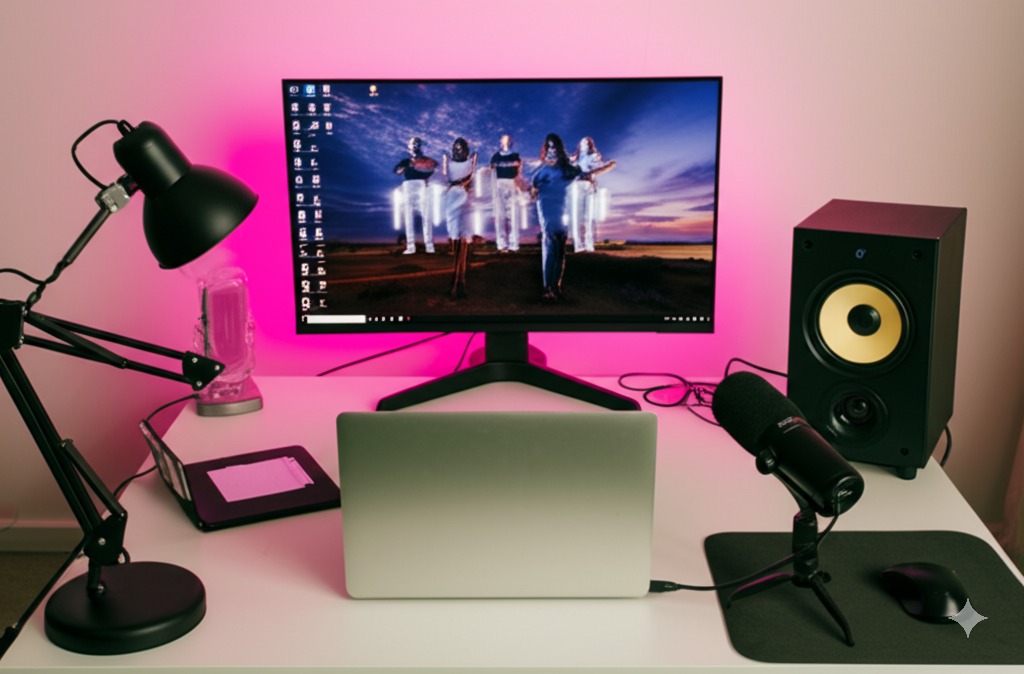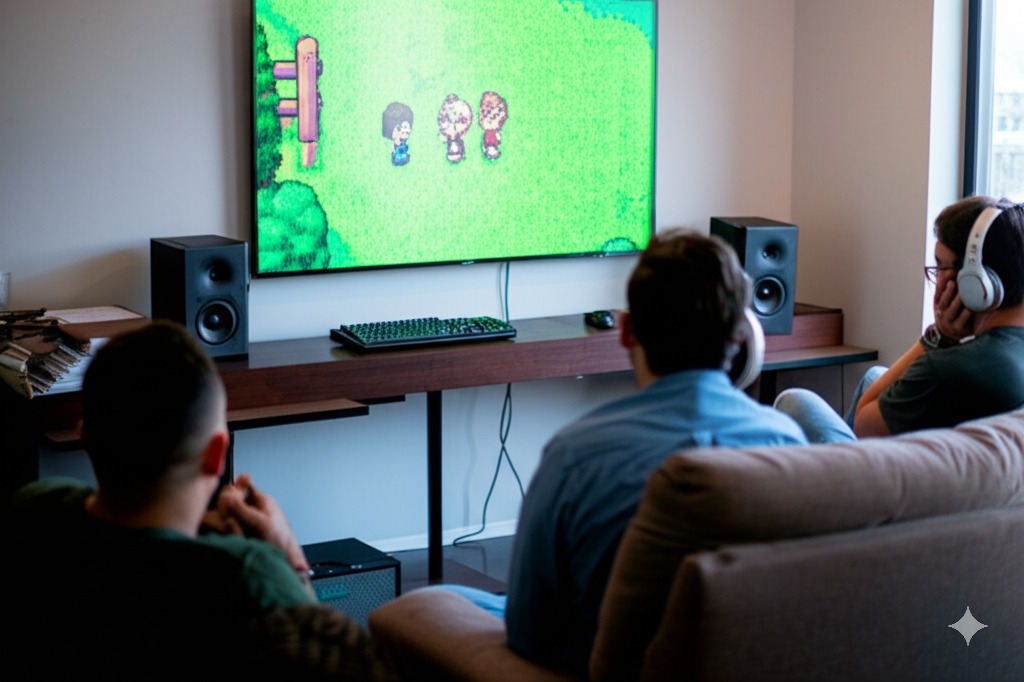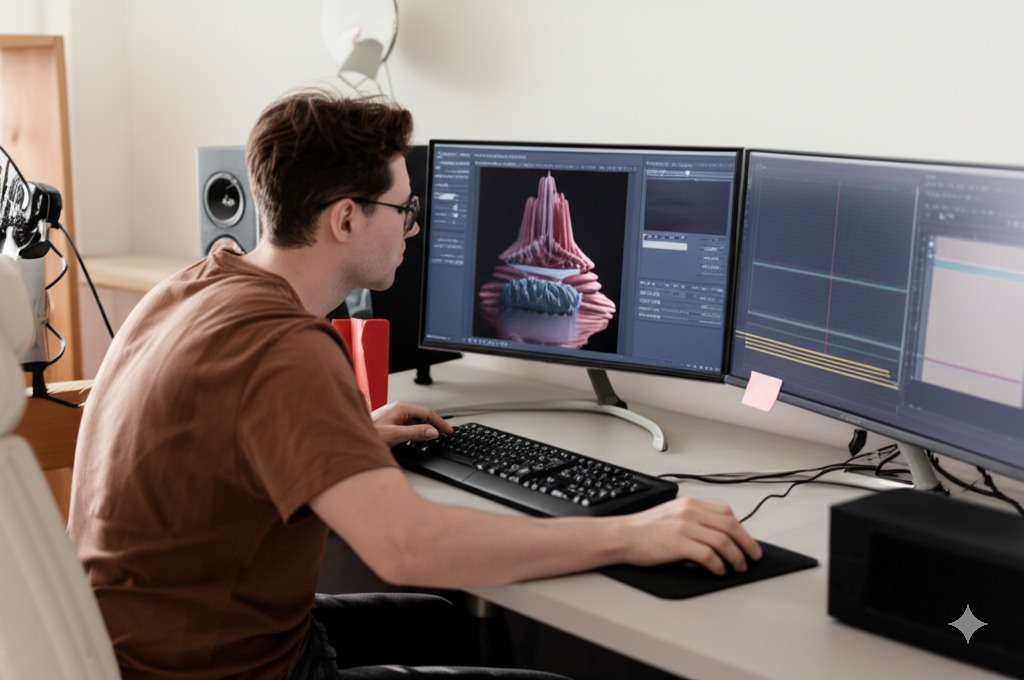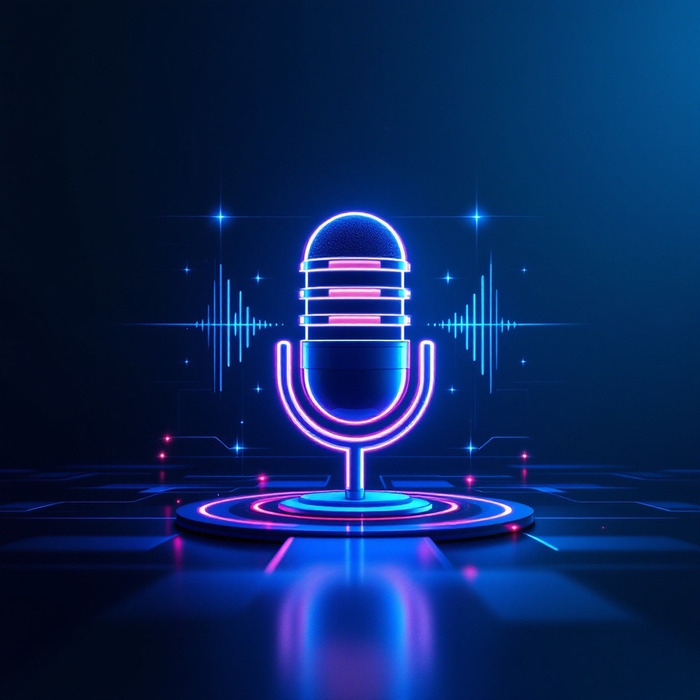
AI voice for indie games helps small developers add professional-sounding character voices to their games without the high costs of hiring voice actors. It uses artificial intelligence to generate realistic speech from text, letting game creators produce dialogue for multiple characters at a fraction of the traditional cost.
These tools range from simple text-to-speech engines to sophisticated AI systems that can express emotions and maintain consistent character voices throughout a game.
Creating an indie game with great voice acting used to mean either spending thousands of dollars you don’t have or settling for no voices at all. Voice actors, studios, directors, and equipment all cost money that most small game developers just can’t spare.
AI voice for indie games is changing this reality. Now, even the smallest studios can add voice acting to their games at prices that won’t break the bank. Instead of recording each line with human actors, you can type your dialogue and let AI generate natural-sounding speech.
The technology has gotten surprisingly good in recent years. While early text-to-speech systems sounded robotic and lifeless, modern AI voice actors for indie games can convey emotion, personality, and character distinctiveness. Some players can’t even tell the difference between AI voices and human recordings in certain games.
This guide will show you how to use AI voice technology effectively in your game project, from choosing the right tools to implementing them technically and directing them for the best performance.

How Voice Acting Has Changed for Indie Developers
Voice acting in indie games has come a long way. Just a few years ago, most indie developers faced a tough choice: either skip voice acting completely or blow a huge chunk of your budget on it.
Think about it – for a game with just 10 characters and a moderate amount of dialogue, you’d need to:
- Find and hire 10 different voice actors
- Pay for studio time (or accept lower quality home recordings)
- Spend hours directing recording sessions
- Edit and process all the audio files
- Schedule and pay for additional sessions when the script changes
For many small teams, this just wasn’t realistic. That’s why so many indie games stuck with text-only dialogue.
AI voice acting for games has completely changed this situation. Small studios can now include full voice acting without the massive price tag or logistical headaches. Players have noticed, too – they increasingly expect voice acting even in indie titles, and AI voice for indie games helps developers meet these expectations.
How AI Voice Technology Actually Works
You don’t need to be a tech genius to use AI voice for indie games, but it helps to understand the basics of how it works.
Most AI voice systems use what’s called neural networks – computer systems trained on thousands of hours of human speech. These systems learn patterns in how people speak, including pronunciation, rhythm, and emotion. When you input text, the AI uses these patterns to generate speech that sounds natural.
There are two main approaches you’ll encounter:
- Text to speech for indie games: You type your dialogue, and the AI reads it using pre-built voices. You can usually adjust things like pace, pitch, and emotion.
- Voice cloning: Some systems can analyze samples of a real person’s voice (with their permission) and create an AI version that sounds similar. This is more advanced but can produce more authentic results.
The best AI voice actors for indie games combine these approaches, letting you choose from pre-built character voices or create custom ones for your specific needs.
Comparing Costs: AI Voice vs. Human Voice Actors
Let’s talk real numbers to show why AI voice for indie games is so appealing for developers on a budget.
For a medium-sized indie game with about 5,000 words of dialogue spread across 8 characters, here’s what you might pay:
Human voice actors:
- Voice talent: $100-400 per recording session per actor
- Studio time: $50-100 per hour (6-12 hours total)
- Audio editing: 10-20 hours of work
- Total cost: $2,000-8,000
Budget voice acting for game developers using AI:
- AI voice subscription: $30-200 per month for 3-6 months
- Custom voice creation (optional): $50-300 per voice
- Audio editing: Similar time to human recordings
- Total cost: $150-1,500
Source: Game Developer: Voice Acting for Indie Games
The cost comparison between AI and human voice actors for games is pretty clear – AI can be 5-10 times cheaper. Plus, with AI, you can make unlimited revisions without booking new sessions. When your playtesters point out that a line isn’t working, you can change it right away.
Choosing the Right AI Voice Tool for Your Game
Not all AI voice for indie games tools are created equal. The best choice depends on your specific game and needs.
Here are the key factors to consider:
- Voice quality and naturalness: Some tools sound more human than others. Always listen to samples before committing.
- Emotion control: Can the system express different emotions like anger, fear, or excitement?
- Character consistency: Will the voice maintain the same character traits throughout your game?
- Integration options: How easily does it work with your game engine?
- Price structure: Pay-per-character, subscription, or one-time purchase?
For narrative-heavy games like RPGs or adventure games, you’ll want to invest in higher-quality voice synthesis for game development with good emotional range. For games with minimal dialogue, simpler and cheaper options might be sufficient.

Some popular options for AI voice actors for indie games include:
- PlayHT – Great for natural-sounding character voices
- Replica Studios – Designed specifically for game developers
- Resemble AI – Good integration with Unity
- Murf – Budget-friendly with decent quality
- ElevenLabs – Excellent emotional range
Many developers use AI text to speech solutions as a starting point and customize from there to fit their game’s specific style.
Technical Implementation in Game Engines
Getting AI voice for indie games working in your game engine is surprisingly straightforward these days.
For Unity
Unity makes implementing voice implementation in Unity relatively simple. You have several options:
- Generate all your audio files externally, then import them as audio clips
- Use a plugin like Resemble AI’s Unity package for direct integration
- Use Unity’s built-in TTS features for prototyping, then replace with higher-quality AI voices
Most developers find the first option simplest – generate all your dialogue as WAV or MP3 files, organize them by character and scene, then import them into your project just like any other audio asset.
For Unreal Engine
Unreal has similar options for AI voice acting for games implementation:
- Import pre-generated audio files
- Use the Text to Speech plugin on the marketplace
- Build custom integration using Python scripting
Both engines handle the audio similarly once it’s in your project. You’ll typically set up a dialogue manager system that plays the right audio file when triggered by game events.
The evolution of text to speech technology has made these implementations much more straightforward than they were just a few years ago.
Creating Great Character Voices with AI
The key to effective AI voice actors for indie games is creating distinctive, consistent character voices that fit your game world.
Here’s a simple process to follow:
- Define each character’s personality traits, age, background, and emotional state
- Create a “voice profile” that matches these character attributes
- Test several variations until you find one that feels right
- Document the exact settings used for future consistency
- Generate a sample dialogue to verify it works in-game
When working with AI character voices, it helps to create a “voice bible” for your project. This document records all the settings and prompts used for each character, ensuring consistency when you generate new lines later in development.
For example, a young, anxious character might use a higher pitch, faster speaking rate, and frequent pauses. An older, confident character might use a lower pitch, slower, more measured delivery, and fewer hesitations.
Most game AI voice generation tools let you adjust these parameters to create unique character voices. Some even let you blend different base voices together for truly distinctive results.
Directing AI Voices for Better Performance
Just like human actors, AI voice actors for indie games need good direction to perform at their best. Here are some techniques to improve your AI voice performances:
- Script formatting: Break long sentences into natural speaking chunks. Use punctuation to control pacing.
- Emotional prompting: Most AI tools let you specify emotions. Don’t just write “John: I can’t believe you did this.” Instead, try “John (angry, betrayed): I can’t believe you did this.”
- Iteration: Generate multiple takes with slightly different settings, then choose the best one.
- Post-processing: Simple audio effects like reverb for large rooms or filters for radio voices can make AI voices sound more integrated with your game world.

Voice direction for AI is becoming its own skill. The best results come from treating the AI as you would a voice actor – giving clear direction about the context, emotion, and intention behind each line.
For complex emotional scenes, some developers use emotional AI voice technologies that are specifically designed to convey nuanced feelings.
Real Examples from Released Indie Games
Several indie games have successfully used AI voice for indie games with great results:
The Vale: Shadow of the Crown
This audio-focused game was designed primarily for visually impaired players, making voice acting crucial. The developers used a combination of human voices for main characters and AI-generated voices for supporting roles, creating a rich audio world while keeping costs manageable.
Source: Fallen Flag Studio: The Vale
Whispers of a Machine
This adventure game used affordable game voice acting techniques to voice its characters. The developers focused their budget on a few key human actors for main roles while supplementing with high-quality AI voices for secondary characters.
Source: Whispers of a Machine
Neo Cab
This narrative-driven game about a futuristic taxi driver used a hybrid approach. By carefully selecting which characters received human voice acting and which used AI voice actors for indie games, they created a consistent world without exceeding their budget.
Source: Neo Cab
These examples show that AI voice for indie games doesn’t have to be an all-or-nothing approach. Many successful indies use a strategic mix of human and AI voices, focusing their budget where it matters most.
Legal and Ethical Considerations
Using AI voice for indie games comes with some important legal and ethical considerations:
- Licensing: Make sure you have commercial rights for the voices you use. Many AI services have different pricing tiers for personal projects versus commercial games.
- Voice likeness: Avoid creating AI voices that could be mistaken for specific celebrities or voice actors without permission.
- Proper attribution: Include the AI voice technology in your game’s credits, just as you would credit human voice actors.
- Transparency: Some developers choose to be upfront with players about using digital voice actors for video games rather than humans. This is a personal choice, but transparency builds trust.
The legal landscape around AI voice acting for games is still evolving, so it’s worth staying up-to-date on the latest guidance. When in doubt, consult with a lawyer who specializes in game development or digital media.

Tips for Making AI Voices Sound Better
Even budget-friendly AI voice for indie games can sound great with these tricks:
- Break up long dialogue: AI voices sound more natural with shorter sentences. Split long monologues into conversational chunks.
- Add natural pauses: Insert ellipses (…) or commas where a person would naturally pause.
- Control emphasis: CAPITALIZE words you want emphasized, or use italic formatting if your AI tool supports it.
- Post-process audio: Simple EQ adjustments can make voices sound warmer and more natural.
- Add ambient effects: Light background noise appropriate to the setting (room tone, outdoor ambience) helps voices sound more natural.
- Implement dynamic audio: Add slight variations in volume based on distance and environment.
These techniques help bridge the gap between low-cost game voice production and professional-quality results.
The Future of AI Voice in Games
AI voice for indie games is improving rapidly. Here’s what we can expect in the near future:
- Better emotional range: Newer systems will express more subtle and complex emotions.
- Improved naturalness: The “robot voice” qualities will continue to diminish.
- Easier integration: Direct plugins for game engines will make implementation even simpler.
- Lower costs: As technology improves and competition increases, prices will likely drop.
- Real-time generation: Eventually, some games may generate voice acting on the fly rather than pre-recording all lines.
These advancements will make how to implement AI voices in indie games on a budget even easier for future developers. The gap between indie and AAA voice quality will continue to shrink.
The most forward-thinking developers are already exploring how best AI voice tools for narrative game development can enable new types of gameplay, like characters that can respond vocally to player input in ways that weren’t possible with pre-recorded dialogue.
Technical Requirements and Performance Considerations
For developers concerned about the technical requirements for AI voice acting in Unity games and other engines, here are some practical considerations:
- File sizes: AI-generated voice files are comparable to regular audio files. Plan your storage accordingly, especially for dialogue-heavy games.
- Memory usage: Loading too many audio files simultaneously can cause performance issues. Implement proper audio streaming and management.
- Processing power: Generating voices in real-time during gameplay is possible but can be processor-intensive. Most games pre-generate all dialogue.
- Localization: One huge advantage of AI voice for indie games is easier localization. You can generate voices for multiple languages without hiring new actors for each language.
Most modern game dialogue systems are already designed to handle audio files regardless of whether they came from human recordings or AI generation. Your existing dialogue management system will likely work fine with AI voices.
Frequently Asked Questions
How much can indie developers save using AI voices?
Most projects save 70-90% compared to professional voice actors. A game that might cost $5,000-10,000 to voice with humans might cost $500-1,500 with AI voice for indie games.
Do players notice or complain about AI voices?
It depends on quality and implementation. High-quality AI voices used appropriately often go unnoticed. Lower-quality voices or poor implementation can break immersion. Many developers find that players care more about having voice acting at all than whether it’s AI or human.
What games are best suited for AI voice technology?
Narrative games with lots of characters benefit most from AI voice acting for games. RPGs, adventure games, visual novels, and story-driven games see the biggest advantages in both cost savings and production value.
Can AI voices handle singing or special voice effects?
Singing remains challenging for most AI voices, though the technology is improving. Special effects like robot voices, radio distortion, or megaphone effects actually work quite well with AI voices and can help mask any remaining “artificial” qualities.
How do you handle localization with AI voices?
This is one of the biggest advantages of AI voice for indie games. Many AI voice platforms offer multiple languages, allowing you to generate localized voice acting without hiring new actors for each language. This makes international releases much more accessible for indie teams.

Conclusion
AI voice for indie games has transformed what’s possible for small development teams. Voice acting is no longer limited to big-budget productions – even solo developers and tiny studios can now add professional-sounding voices to their games.
While the technology isn’t perfect for every situation, it offers an incredible value proposition: dramatically lower costs, infinite revisions, faster production, and easier localization. As the technology continues to improve, the quality gap between AI and human performances narrows every year.
The most successful implementations often take a hybrid approach, using budget voice acting for game developers strategies like focusing human actors on the most critical roles while using AI for supporting characters. This balanced approach gives you the best of both worlds.
If you’re an indie developer who’s been avoiding voice acting because of budget concerns, it’s time to take another look. The tools available today might surprise you with their quality and affordability, allowing you to add a new dimension to your game’s storytelling within your existing budget.
Sources
- https://www.gamedeveloper.com/audio/getting-excellent-voice-acting-into-your-indie-game—part-1
- https://www.respeecher.com/blog/ai-generated-voices-music-production
- https://www.unrealengine.com/marketplace/en-US/product/text-to-speech
- https://assetstore.unity.com/packages/tools/audio/resemble-ai-speech-synthesis-219954
- https://www.sonantic.io/blog/ai-voice-actors-for-video-games

